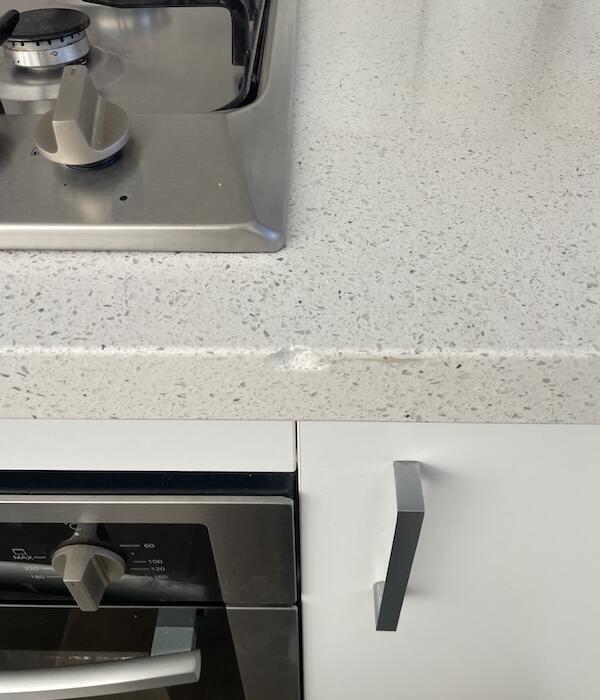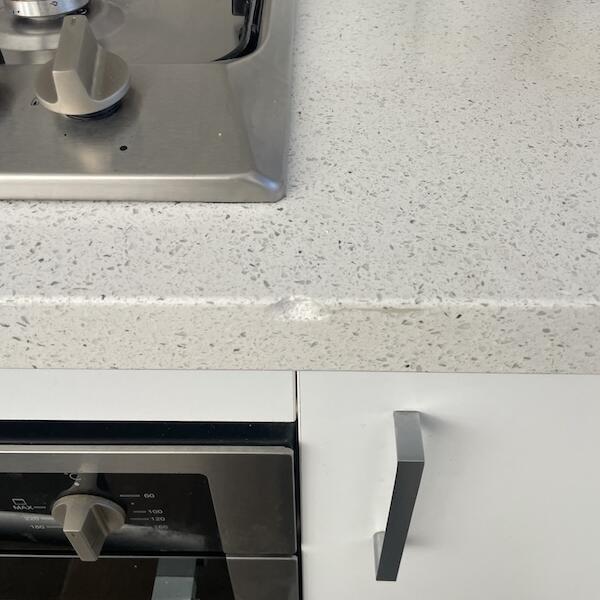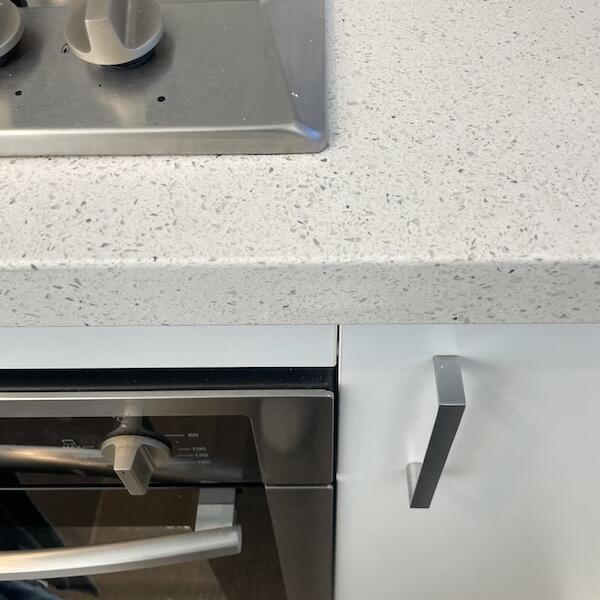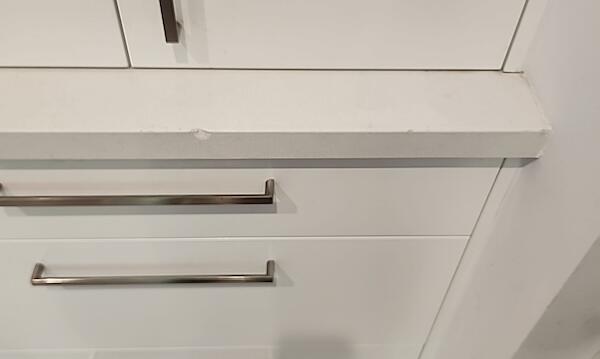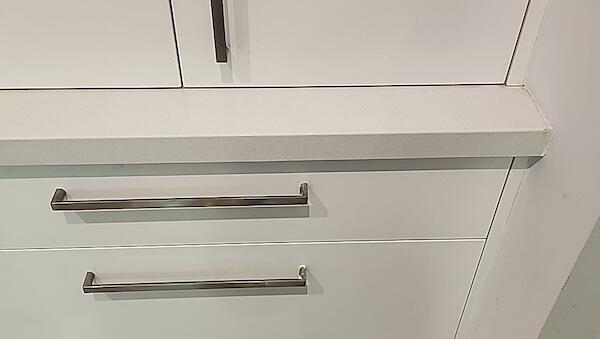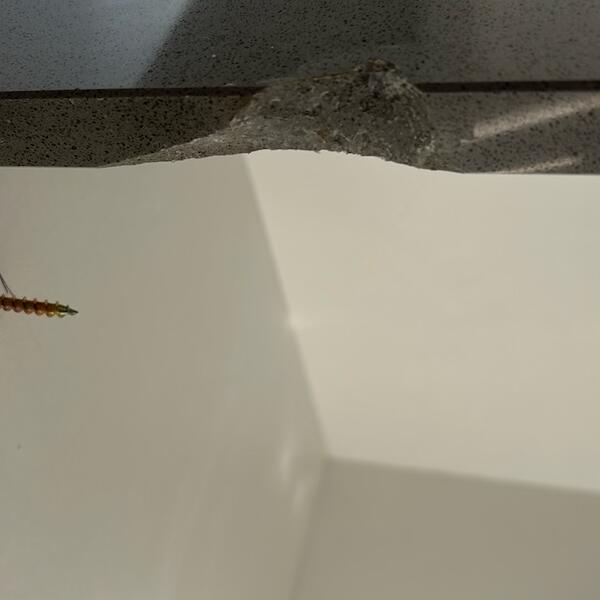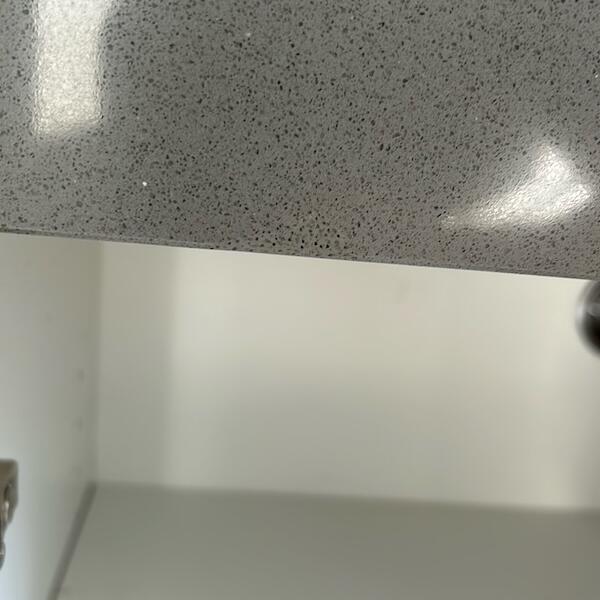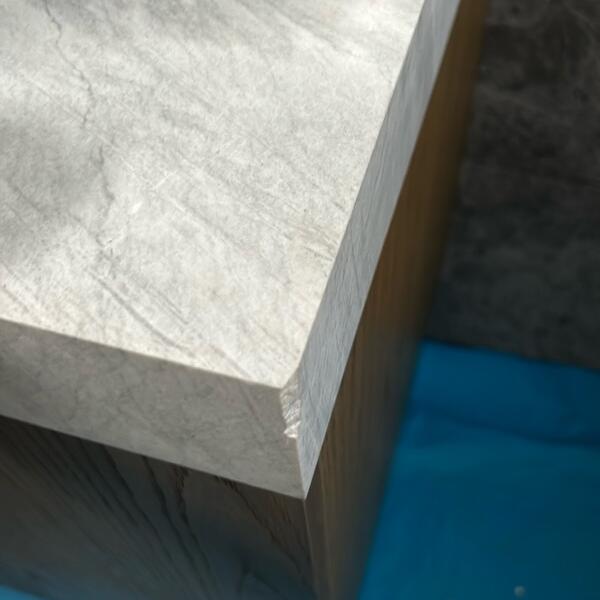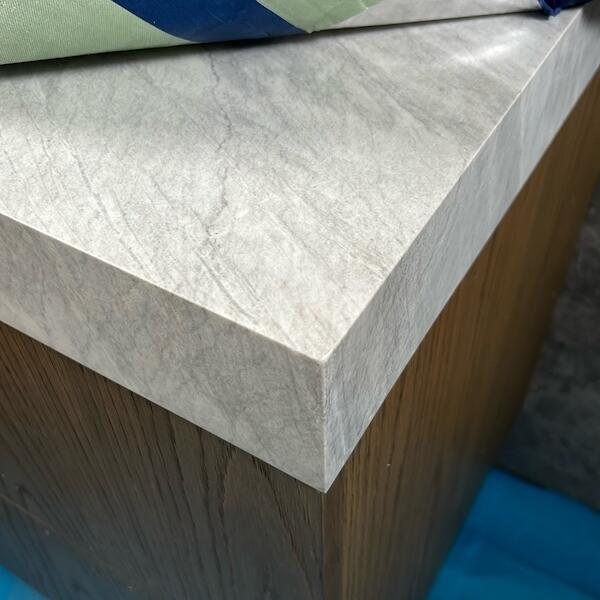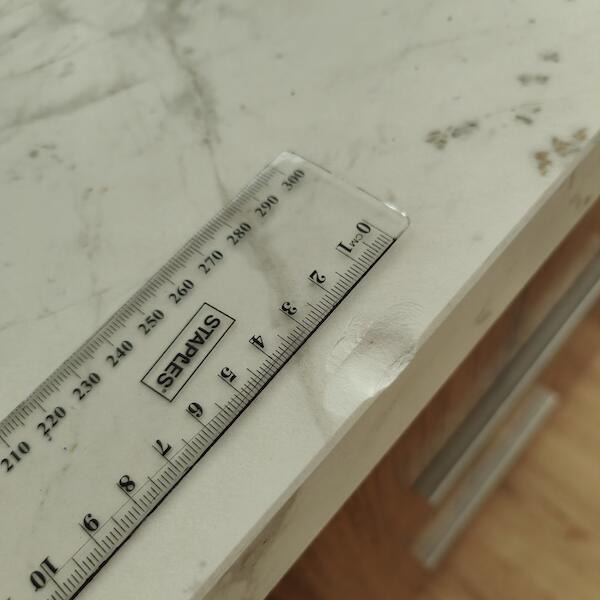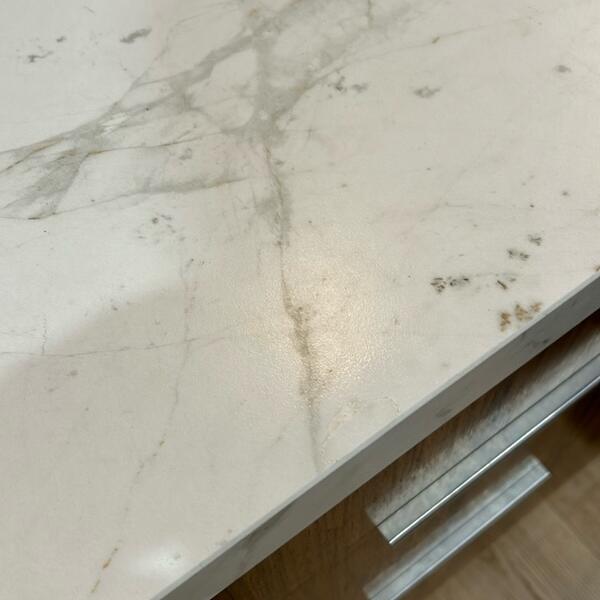That heart-stopping moment when something drops on your beautiful kitchen or bathroom stone benchtop and leaves a chip behind – it’s like locking your keys in the car…you just wish you can go back 2 minutes and undo it! Whether you have luxurious marble or sleek Caesarstone, chips happen. But before you panic and start researching replacement costs, let’s explore what you need to know about benchtop stone chip repair.
Understanding the different types of stone benchtop
Natural Stone (marble, granite, limestone) has unique characteristics:
- Each piece has one-of-a-kind patterns, colours, and veining
- More porous and sometimes more vulnerable to damage
- Chips tend to reveal the natural material underneath
Engineered Stone (Caesarstone, Smartstone, Essastone) behaves differently:
- Manufactured with consistent patterns
- Typically contains quartz mixed with resins designed to be harder wearing
- Often more uniform in colour and texture but with a higher density of detail
Common causes of chips
Most stone chips result from:
- Heavy objects dropping on edges or surfaces
- Impact from metal pots and pans
- Excessive force when moving appliances
- Natural settling of cabinetry beneath benchtops
When is a chip repairable?
Good news! Most chips can be professionally repaired. Here’s what to consider:
Generally Repairable:
- Edge chips and corner damage
- Surface chips smaller than a 50-cent piece
- Multiple small chips in the same area
More Challenging (but often still repairable):
- Chips with damaged underlying material
- Chips in high-gloss finishes
- Chips in heavily patterned areas
The professional repair process
A quality benchtop stone chip repair involves multiple steps:
- Cleaning and preparing the damaged area
- Colour-matching to the exact shade of your benchtop stone using colour theory
- Building up the damaged section with a range of leading, proven specialized fillers
- For natural stone: recreating veining and patterns, and for engineered stone: recreating flecks and detail
- Using a range of products to match the original surface finish such as matte or gloss
DIY vs. professional repair: what to know
While DIY kits exist, there are crucial differences:
- DIY kits offer limited colour options (usually just basic colours) which don’t commonly match existing benchtops
- Professional repairs include custom colour matching – which takes considerable time to master
- Professionals use a range of specialized fillers that best suit each surface, such as UV-curable resins
- Experts know how to recreate texture and finish to help blend in the repair to the surrounding area
Prevention tips
Keep your stone looking beautiful:
- Always use cutting boards
- Place hot items on trivets, not directly on stone, particularly air fryers
- Be careful when moving heavy objects, particularly around under-mount sinks where the benchtop overhangs
- Clean up spills promptly, especially acidic substances, to avoid stains or discolouration of your stone benchtop
The bottom line
Stone chip repair is a specialized skill that can save you thousands compared to replacement. Professional repairs use specialist skill to match the underlying colour, detail and texture to existing area to make the damage no longer the first thing you see, and restore both the beauty and functionality of your stone surfaces.
Rather than living with unsightly chips or contemplating costly replacement, consider professional repair – it’s the smart, economical solution for maintaining the beauty of your stone benchtops!
Got a chipped stone surface? Contact our experts today for a free assessment!
We have local chip repair expert franchisees who can give you a free quote, come to you to repair and deliver a great experience because you’re dealing with the business owner.
